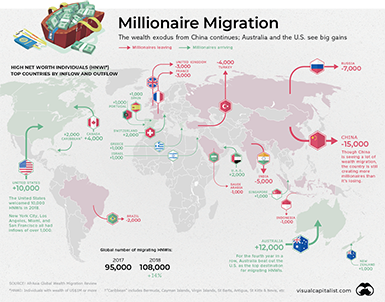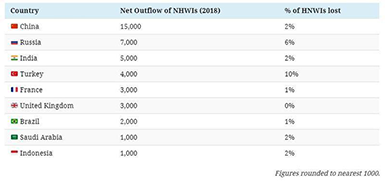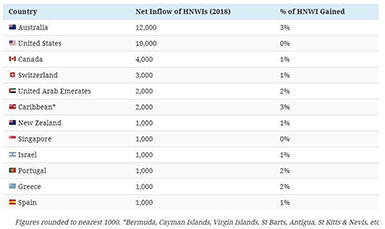|
According to data newly released by Statistics Canada, Canadian corporations held a staggering $353 billion in 12 of the world’s biggest tax haven destinations in 2018.
At the top of the list, Canadian corporations reported holding $90 billion in the tiny European nation of Luxembourg alone — that’s up $8.4 billion since 2017.
Luxembourg is followed by Barbados ($65 billion), Bermuda ($47 billion) and the Cayman Islands ($40 billion), Statistics Canada’s data on Canadian direct investment abroad reveals.
To put that sum of money into context, Luxembourg has now become Canada’s third top destination for corporate investments in the world, trailing only behind major G7 trading partners like the United States and the United Kingdom.
Barbados and Bermuda now round out the top five.
Increase in Canadian direct investment abroad driven by a weaker Canadian dollar
The stock of Canadian direct investment abroad increased by 10.4% in 2018 to reach $1,289 billion. On an instrument basis, almost all of the increase was due to higher equity positions (up $115 billion to $1,198 billion), with debt balances up $6 billion to $91 billion.
While the growth in the stock of Canadian direct investment abroad in 2018 was significantly higher than in the previous two years, the majority of that increase was due to valuation gains from a weaker Canadian dollar, which resulted in a $72 billion upward revaluation of Canada's direct investment position. In 2018, the Canadian dollar depreciated by 8.7% against the US dollar, 3.7% against the euro and 2.8% against the British pound.
On a regional basis, nearly three quarters of the 2018 increase in the stock of Canadian direct investment abroad was due to higher investment positions in the North America region, primarily the United States (up $70 billion to $595 billion). Most of the remaining increase was in Europe, led by higher investment in the United Kingdom (up $12 billion to $109 billion) and Luxembourg (up $8 billion to $90 billion).
Investment in other parts of the world was mixed, with an increase in the Asia/Oceania region (up $4 billion to $89 billion) offset in part by a small decline in South and Central America (down $1 billion to $67 billion). The increase in Asia/Oceania, primarily in China, Hong Kong and Japan, was due to a combination of valuation gains from the weaker Canadian dollar against most major Asian currencies and higher equity balances.
Changes in the value of currency also contributed to the lower investment positions in South and Central America, most notably in Argentina where a 53% decline in the value of the Argentinian peso against the Canadian dollar led to significant reduction in the investment position.
On an industry basis almost half of the growth in the stock of direct investment abroad in 2018 was in the finance and insurance industry (up $53 billion to $471 billion), with the transportation and warehousing as well as the management of companies and enterprises industries also showing significant increases. This growth was partially offset by declines in the information and cultural industries and in mining (except oil and gas).
The transportation and warehousing industry in particular has experienced a period of rapid growth in recent years, with the overall investment position increasing by nearly 150% from $34 billion in 2014 to $84 billion in 2018. This was largely driven by merger and acquisition activity in the United States.
Finance and insurance (37%) continued to be the most significant industry for Canadian direct investment abroad in 2018, followed by mining and oil and gas extraction (15%) and management of companies and enterprises (13%).
Source: Stats Canada Foreign direct investment, 2018
|






 About us
About us